Kids room paint ideas - 12 playful and imaginative ways with color
With these kids room paint ideas, you can be sure your little one will love their time indoors
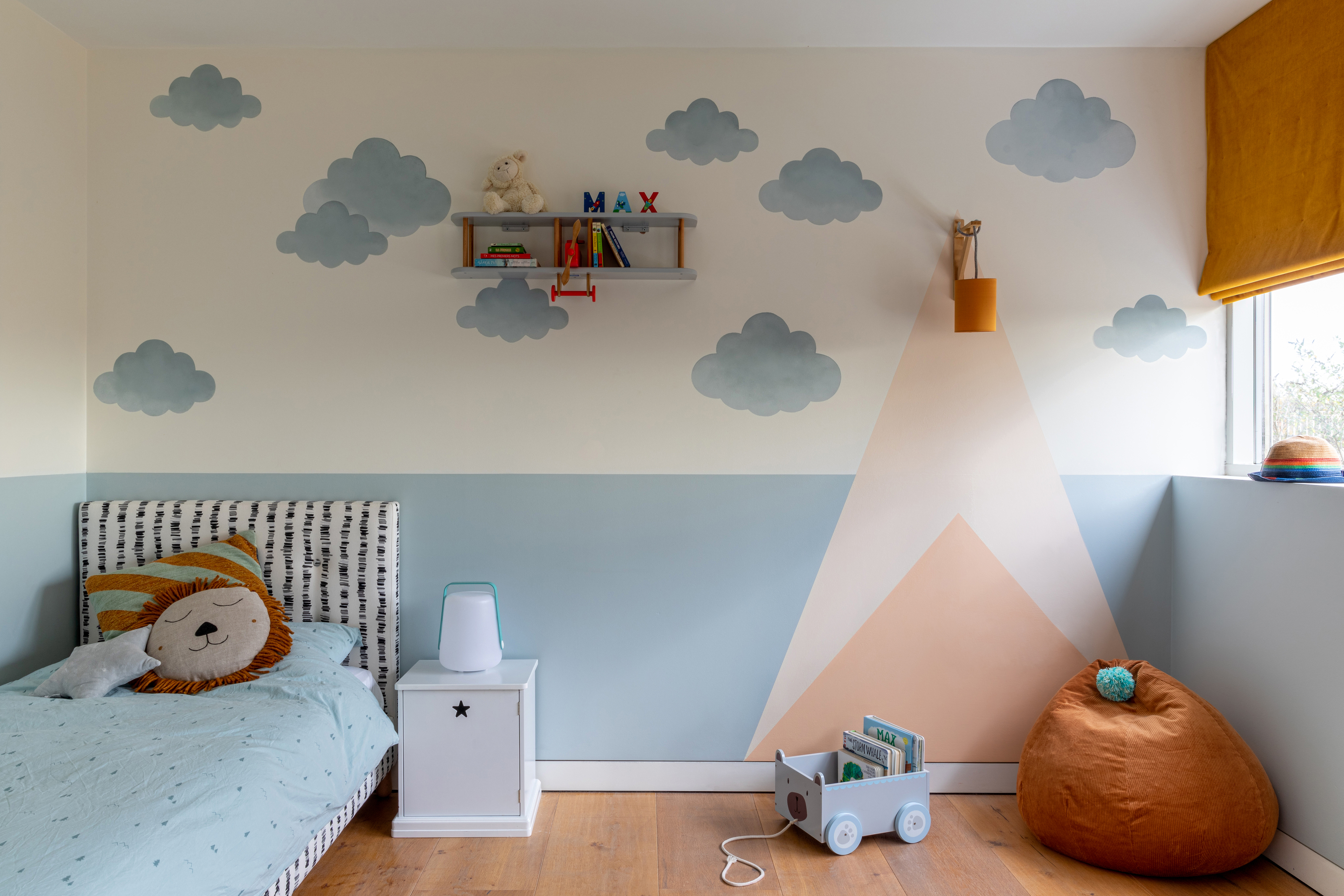

For kid's room paint ideas, think of bright, bold, and unique color effects. Let the room reflect the liveliness of their nature.
One thing to keep in mind though when considering kids' room ideas is that going too bold can be a mistake. Ideally, the room should have a combination of colors that are vivid and subtle so that the room isn't a very high-energy space, and they can still feel relaxed and go to bed without distractions. Plus, don't discount the power of neutrals because these hues work for years, as the children grow and their tastes, personalities, and preferences change.
'A child’s bedroom is for sleeping, dreaming, and rest, but many children play and hang out in their rooms for quiet time alone or with friends,' says Jude Stewart, a design writer and author of the book ROY G. BIV: An Exceedingly Surprising Book About Color. 'It’s a haven in the house that’s all theirs. A kid’s bedroom should be colored to provide a similar sense of restoration and active calm but also speak to a child’s sense of self. I am big on moving past gendered colors like pinks and blues for kids’ rooms. Why limit your child to this narrow palette when there’s the whole rainbow to explore?'
If you are in the middle of a home renovation or simply feel the need to give a fresh design dose to your child's bedroom then these ideas suggested by top designers will help.
12 kids room paint ideas for the most creative space in the house
'In kid's rooms, you need to find a balance between playful and sophisticated so you don't find yourself repainting at every age and stage,' says Jessica Risko Smith, founder of JRS ID. 'I like to work with mid-range tones or classic hues, like Cyan and Umber. Remember the paint color is just one element, so try to compare the hue with a variety of other colors so it is flexible over time. Look toward fashion or nature for inspiration for color combinations.'
1. Color the walls and ceiling cornices in contrasting hues
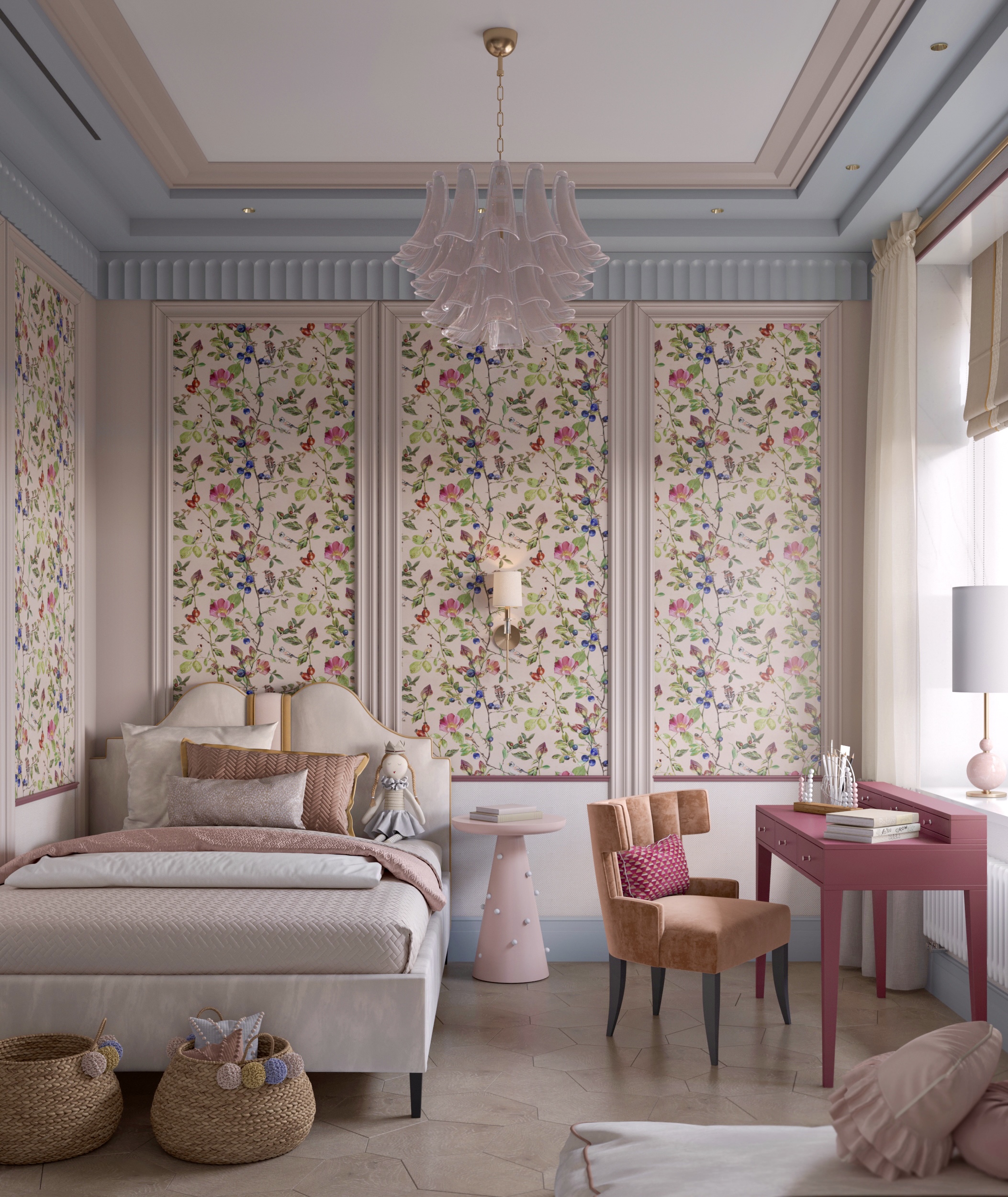
Paint on cornices and panels can highlight the architectural value of a room. If your home has good bones, then use paint to make the most of it. Take this girl's bedroom, for instance, designed by Maria Kalina, where the paneling on the walls is highlighted by wallpaper, and paint.
The pink seamlessly flows within the room, with a similar toned bed, side table, pendant, and study table. To highlight the wonderful cornicing, a pastel blue is used for a pleasing contrast. The candy-colored scheme looks inviting and restful.
'Generally, young children respond well to pastel tones, while older children thrive in spaces decorated in vibrant shades that provide emotional and mental stimulation,' says Suzy Chiazzari, color consultant and holistic designer.
2. Paint a fun mural

Painting a mural may not be on everyone's list of 'quick and easy jobs' but if you don't mind spending that time and effort on building your child's room, then a wall mural is a great addition. You can hire the services of a professional to paint something that your child desires, like a landscape as seen in this room by Folds Inside.
Of course, an effect like this can be created by wallpaper too, in case a paint job isn't possible. You could even go for decals as these can be easily pasted and removed by hand, at will. They do not leave a mark and some decals can be reused too. For those renting homes, this is a good solution.
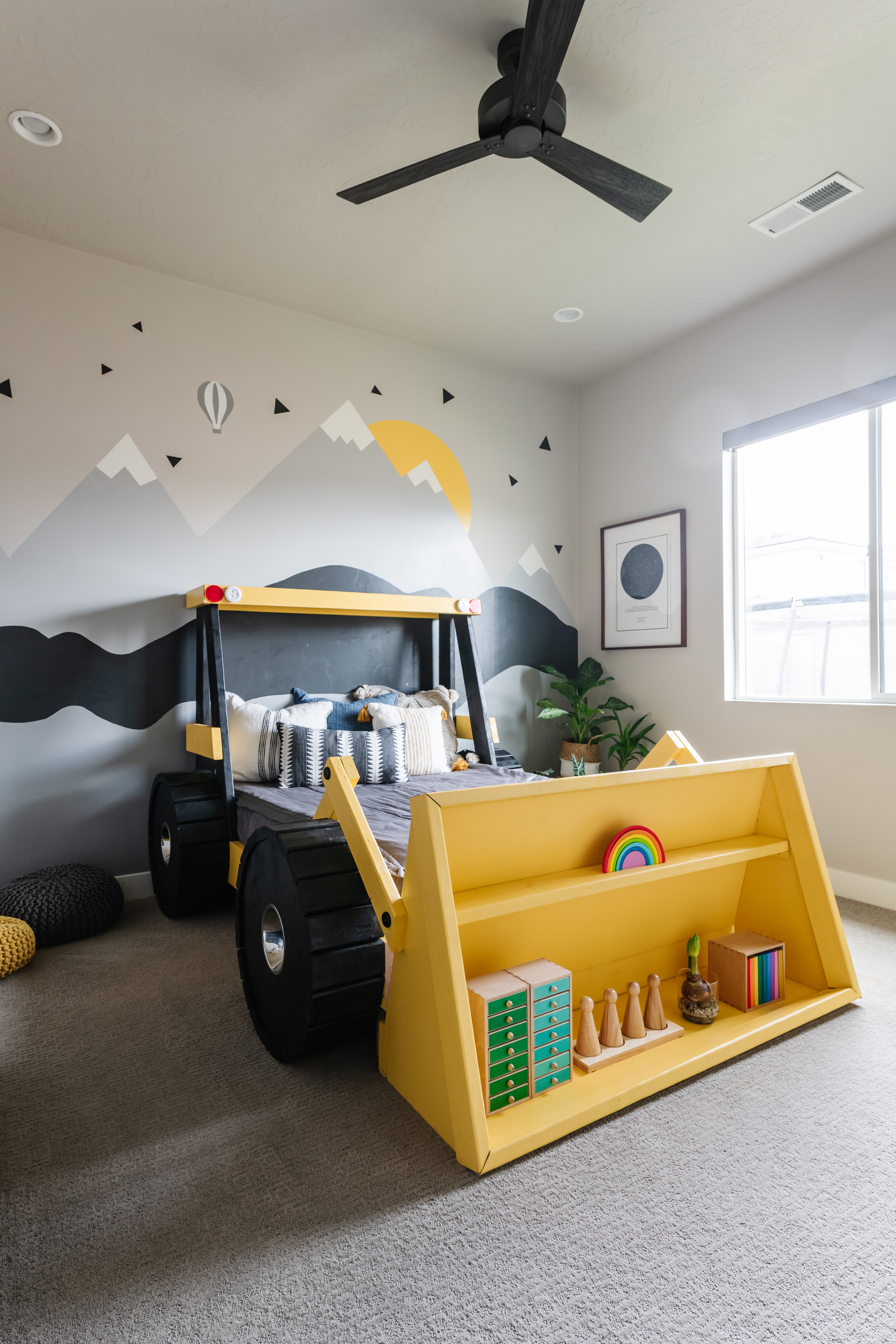
'To design this mural, I painted the wall Sherwin William 7043 Worldly Gray, and then taped off the mountains and painted the white snowy caps,' says Stephanie Lindsey, founder of Etch Design Group. 'I taped off the snow and then painted a darker version of the grey; for this, I took the Worldly Gray and put a bit of black paint to mix a darker grey. I used Behr 3753 Black for the rolling hills, which I free-handed. Lastly, I created a compass with a pencil and string to outline the sun coming up behind the mountains, and for that, used Behr 3754 Honey Locust.'
3. Consider a graphic ceiling design
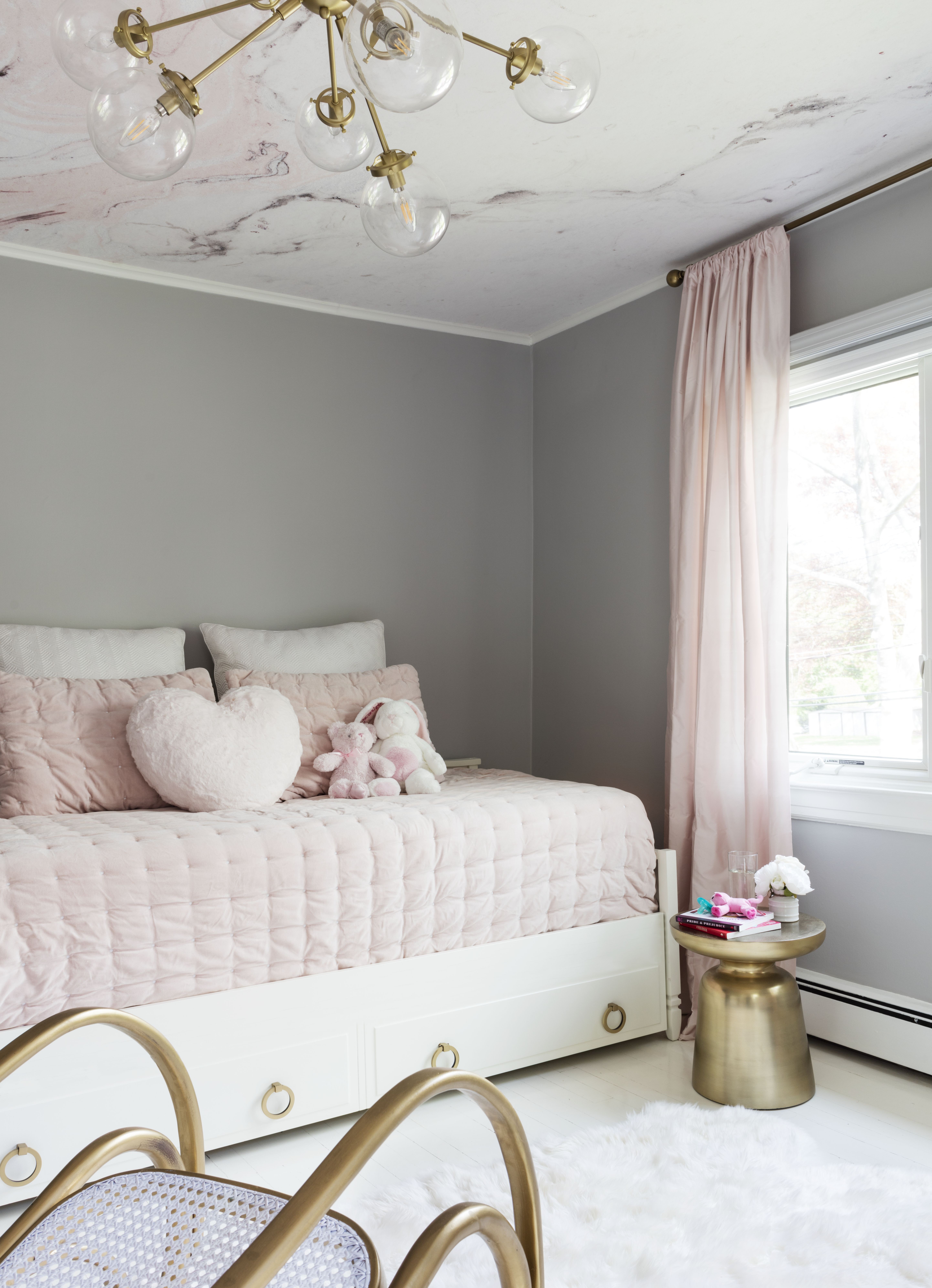
It's pretty standard to paint your walls and keep the ceiling white. But when designing a kid's room, you should ideally break the conventions and think differently. Think of their room as a personal space, like a cave or a treehouse. One that is cocooned, private, and a world where they can retreat to, play, dream, think and create.
Plus, children are curious little beings and love being surrounded by things that stimulate their minds. While lying down in bed, a wonderful image or design on the ceiling can help them dream. Think of adding little painted stars, moons, and constellations on the ceiling, so they know how to tell the planets and the solar system.
In a small bedroom like this one by Think Chic Interiors, the painted walls and ceiling distract from the room's size and provide enough interest points to the child even though the square footage is limited. The pink on the ceiling wonderfully flows below while the grey grounds the scheme.
4. Go for a spray paint effect
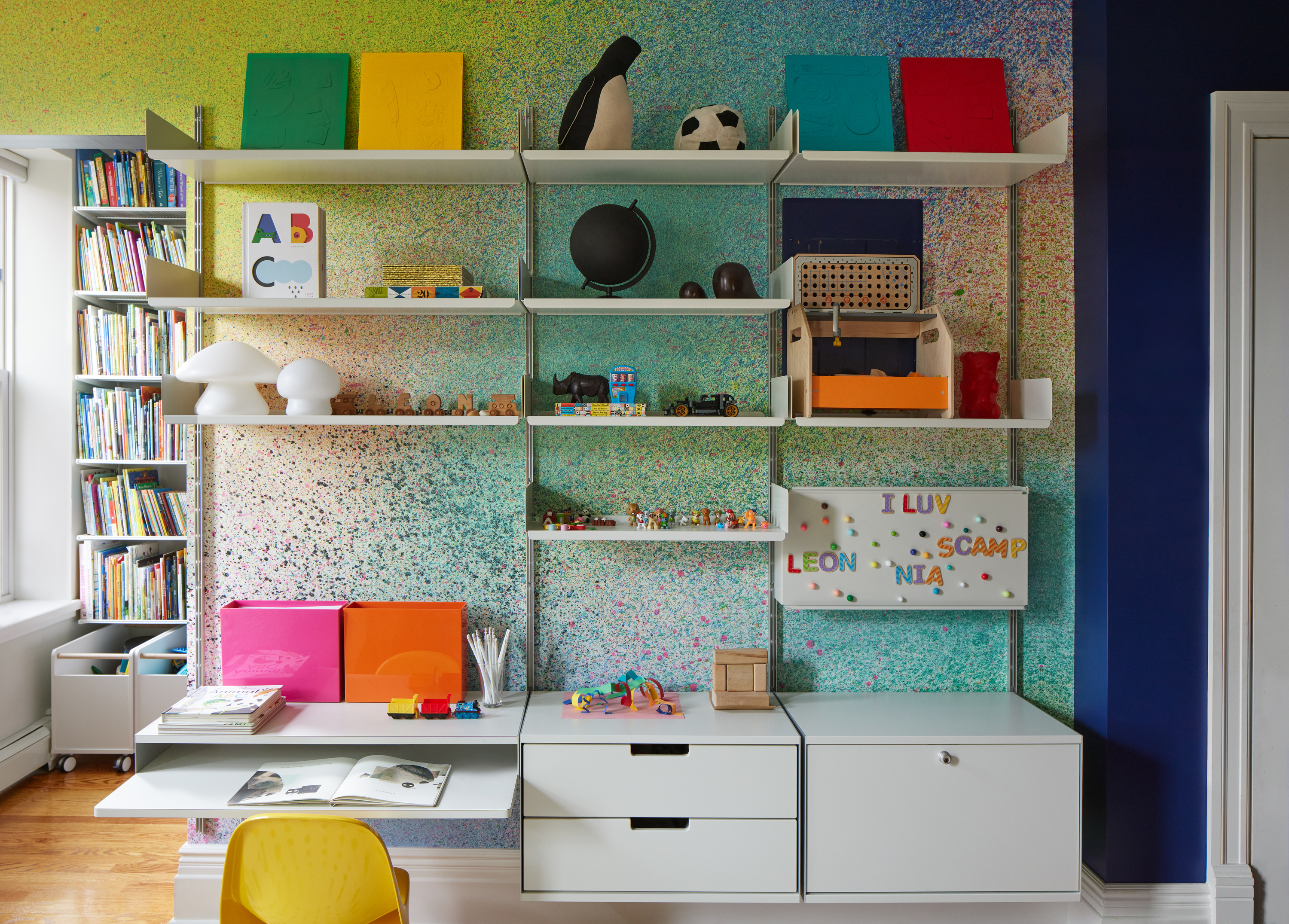
Spray paint is a fun DIY activity and a weekend project if you and your children are up for it. On a Sunday, you could consider clearing the area around the chosen wall and encourage the Banksy in your kids.
The effect will look immediately gripping, and bright and you will have created a fun accent wall in their room. Plus, it'll be something you all worked together on, so the wall will have special significance for your family.
If you plan on spray painting at home, you will need a primer, a plastic tarp to protect the ground, painter's tape, and gloves. Prep the wall by removing all furniture around it. Lay the tarp on the ground and place newspapers too for extra precaution. Tape off the areas and corners you don't want to spray paint on.
Apply the primer to the wall and let it dry. This will ensure your paint has an even finish. Shake the spray can well and start spraying your wall. If you want specific patterns, you can use a stencil and spray along that. Allow the paint to dry for 4-5 hours. And there you have it!
If spray paint isn't going to be a practical exercise, you could use wallpaper that gives a similar effect.
'For this Underhill Avenue Brownstone project, the son gave us a specific direction: he wanted rainbows,' says Barbara Reyes, Director of Design, Interiors at Frederick Tang Architecture. 'Our interpretation was a flat vernacular wallpaper called The Heavens, Dondi Mural. The first reaction of the parents was – is this too intense? Our solution to a strong color/pattern was to add a darker, richer color like Benjamin Moore's Bold blue next to the wallpaper.'
5. Color drench the room
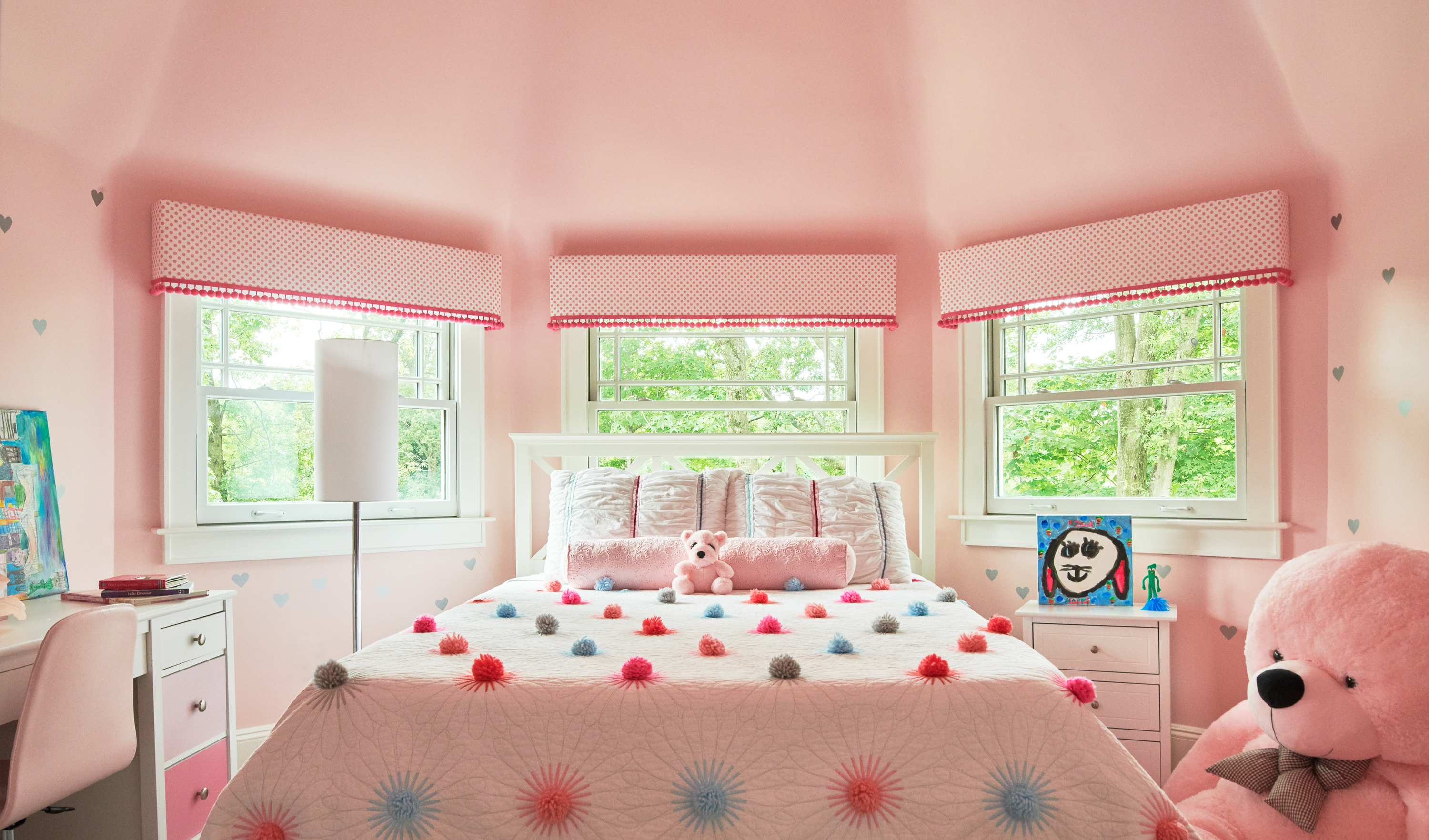
A room fully bathed in color can have quite a strong impact. It can help bring a large space closer together, create a cozy vibe, and in case of more subdued tones, help bounce more light around the room.
One thing to keep in mind however is, that children's color preferences and choices change as they keep growing older. So before committing to color all over, speak to your child if this is something they would be able to live with for a few years.
For a young or even a teenage girls bedroom, pink is usually thought of as a color choice. Although a little cliched, pink, which is a timeless color can create a fun atmosphere.
'Bright and bold colors are always fun for kids' rooms. Paint is so easy to change as kids grow up and tastes change, so why not go for it,' says Georgia Zikas, founder of Georgia Zikas Design.
6. Highlight specific elements with paint
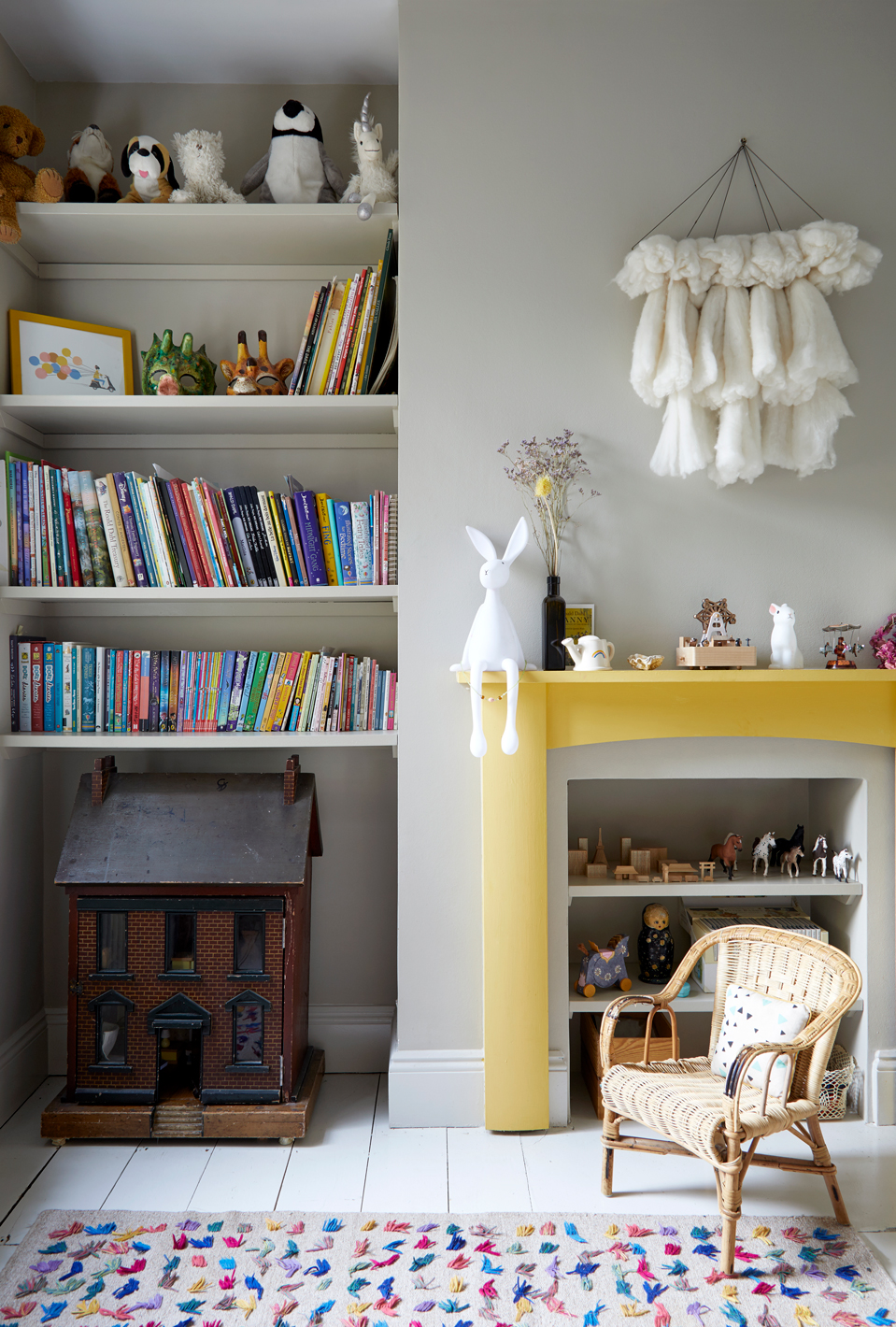
Not everyone is up for committing to all-over, all-out paint, and we understand. If truth be told, even a touch of paint in kids' bedrooms can make a big impact.
Take this space designed by Indie & Co for instance. While the walls are largely muted, a tiny section in-built into the wall for toys is highlighted with a happy yellow. Color is used to section off the two storage areas, and the more 'fun' one is given a lick of paint.
Using color to define spaces is an effective trick in a kid's bedroom where a neat and orderly space can quickly become chaotic. While explaining to children where they should keep their things is one way of dealing with it, by using color on playroom storage, they can learn that only specific things go within that painted unit.
'Neutral greys for the wall is a great gender-neutral selection if you aren’t quite able to commit to a color,' says Kim Armstrong, principal designer at Kim Armstrong Interior Design. 'It is also something that will transition well as the child matures. Bring in the color of your choice through draperies, bedding, beds, art, and accents and bring in personality, even if your wall color of choice isn’t screaming 'look at me.'
7. Glitter paint can add a sparkle to the room
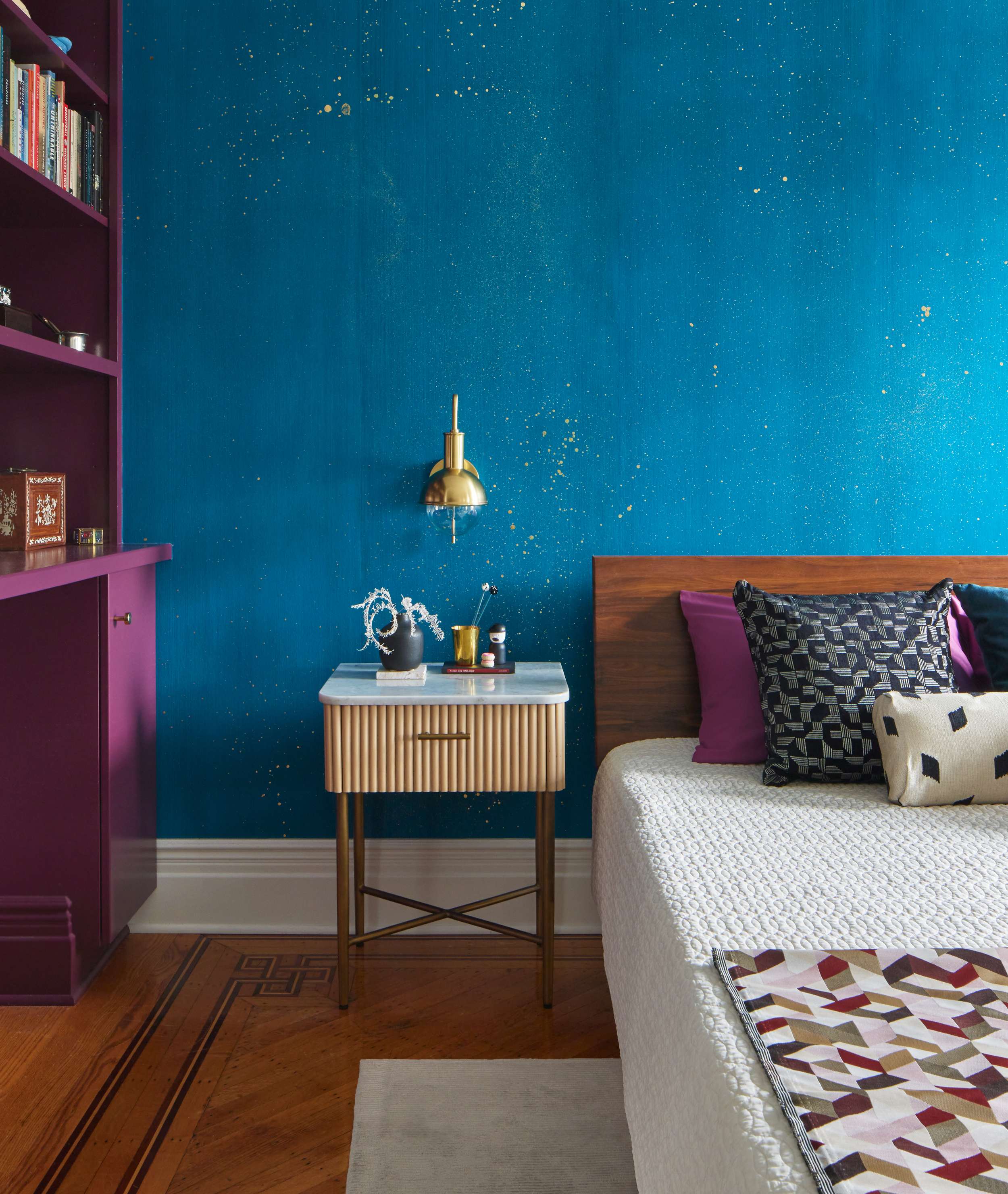
If you're going in for painted walls, and your child is going through a phase where glitter is everything, then a sparkly paint could be the best option.
This is a coating of emulsion for the walls that contain glitter; these can be pre-made glitter paint boxes or you can ask your contractor to use a glitter additive to the final coat of paint. For the best coverage, use a roller rather than a brush.
While glitter paint may seem like a dream come true for the little one, having sparkling walls in the bedroom can be distracting when he/she is trying to study or go to bed. In this case, you could consider adding this paint only on an accent wall, the alcove or simply restricting it to the playroom. Glitter paint is especially useful in darker areas that don't have a lot of light.
8. Have fun with paint effects
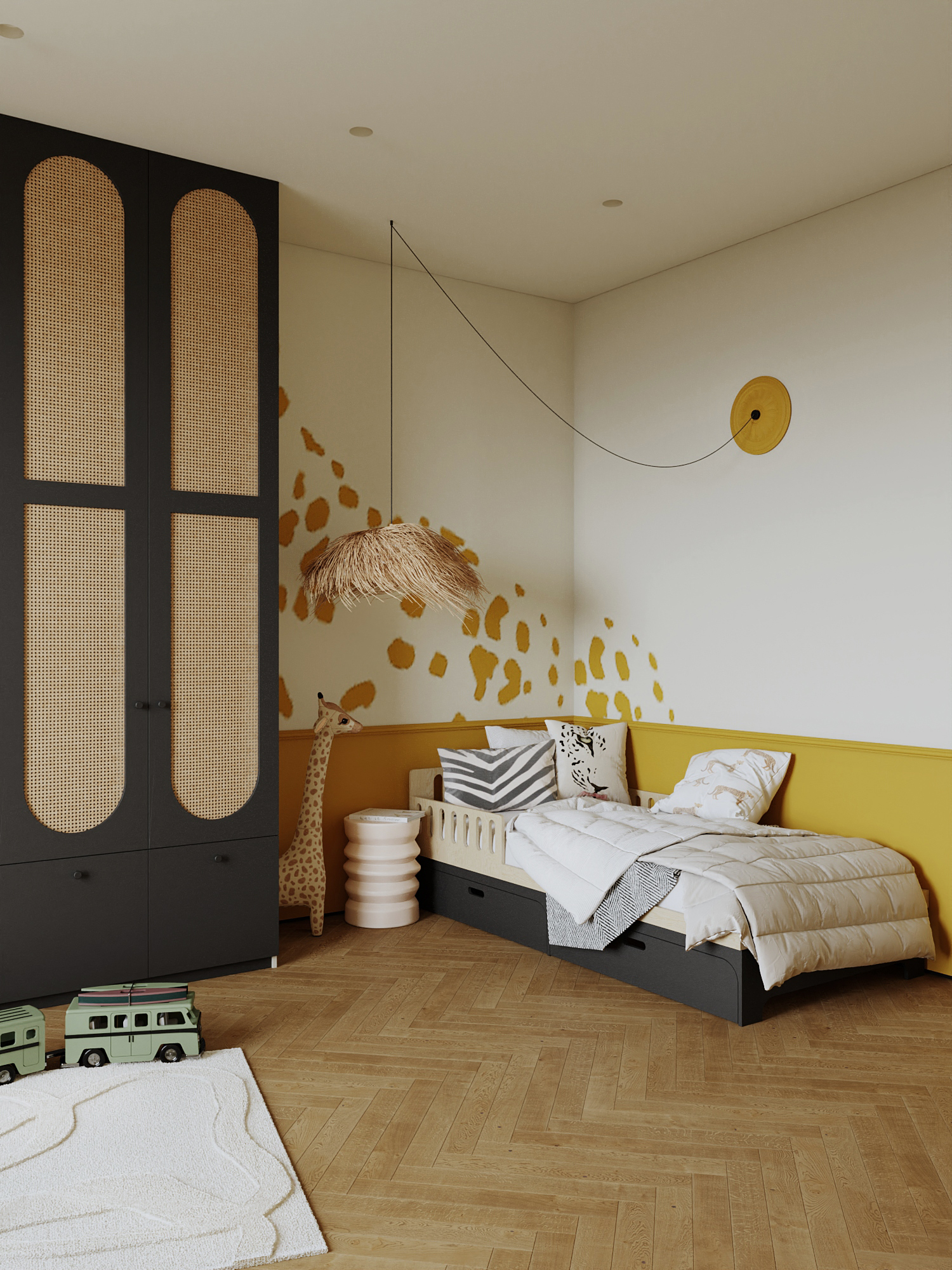
Be creative and get into the mind of the young one for fun bedroom paint ideas. A simple paint on the walls is great but what if you chose a cool effect to go with it?
This room designed by Shubochkini Architects shows how the color yellow is creatively used across the room. While the lower half is painted in this saturated hue, the yellow patches on the wall create a whimsical effect. Even the wall light switch is painted in the same tone. Isn't this such a cozy, imaginative nook?
'Kid's play areas, in particular, are a great space to use bright and vivid colors to encourage stimulation and creativity,' says interior designer and LEED and WELL AP Sarah Barnard. 'Using saturated paints can create a cheery atmosphere that encourages activity. In sleep spaces, balancing bright colors with moments of calm ensures that there are spaces to rest and unwind. Beds enclosed in textiles can offer privacy and an area devoted to quiet and sleep within a more active room.'
9. Paint similar tones on the furniture
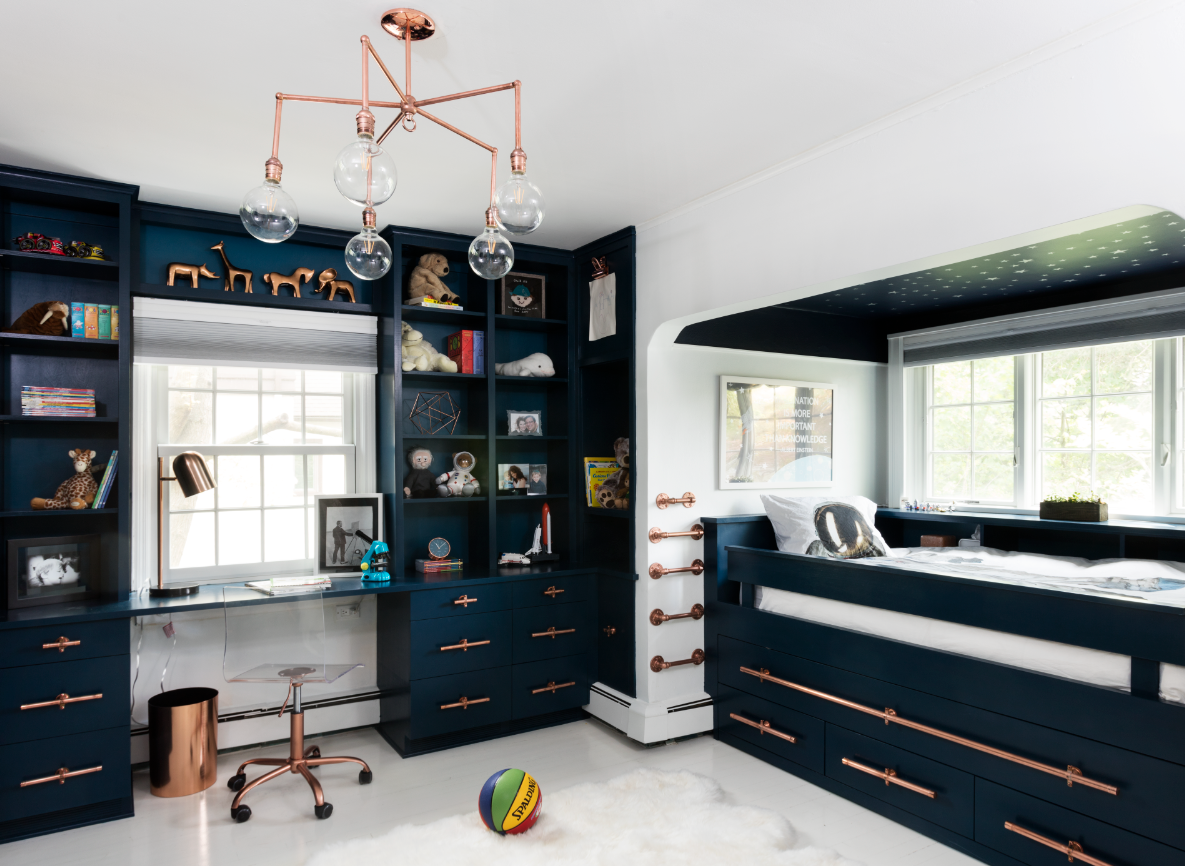
Paint doesn't need to connote to only walls. Even painted furniture can inject all the color you need in a kid or teenage bedroom.
The thing to take note of is that furniture pieces are bulky and different paint colors on furniture can make the room look chaotic. Ideally then, it's best to paint all the pieces the same hue for visual coherence and to create a feeling of seamlessness.
Keep the walls white if you're going for a deep tone. In this room, the blue on the furniture looks great with the bronze-toned handles and the pendant light.
10. Opt for soft colors in a room for a growing child
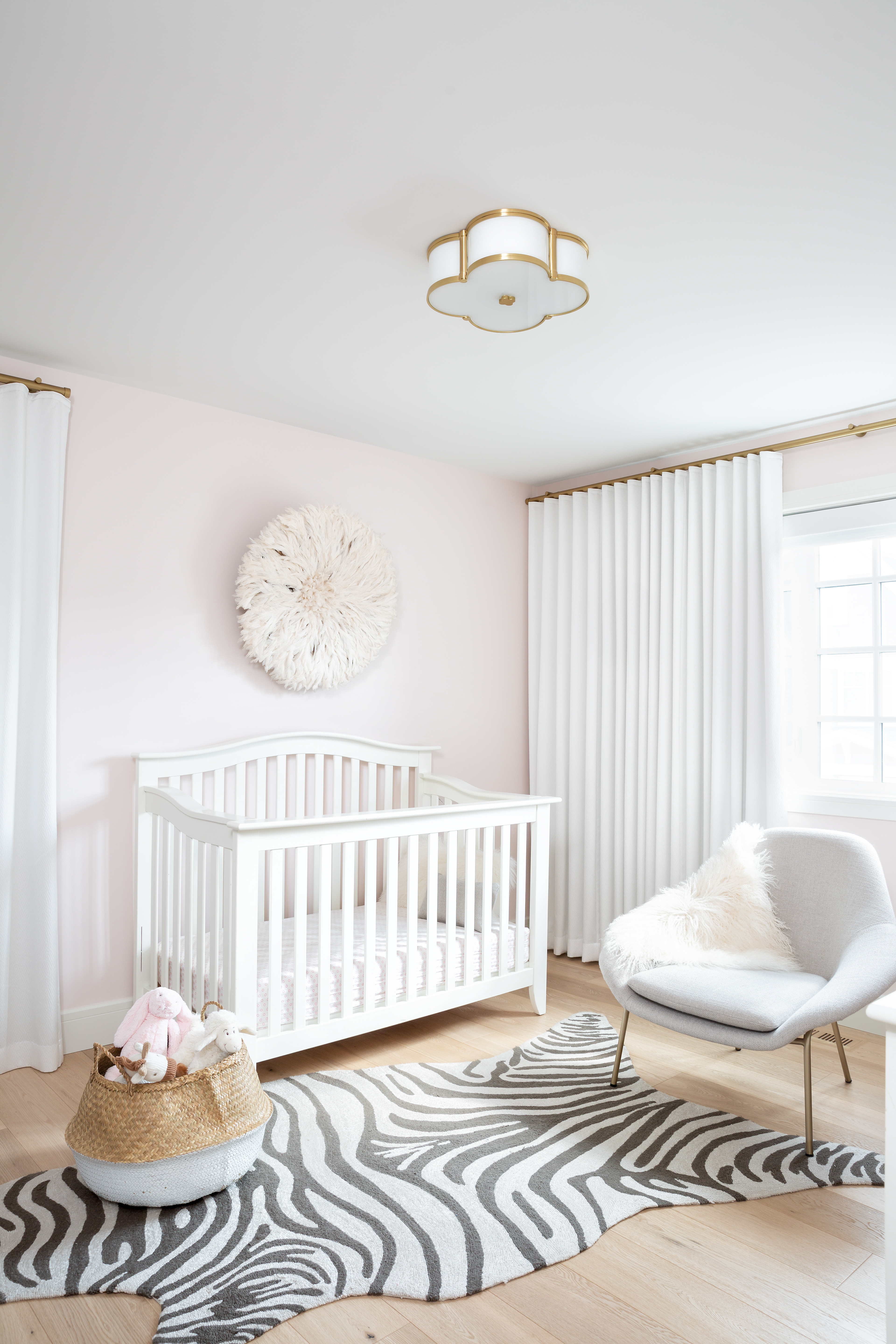
A lot of parents do not subscribe to the idea of white paint on walls because they fear the walls will get dirty and the marks will show. If that is your fear as well, then a soft tone of light green, light pink, or blue could work, without making the room look too stark and sterile.
Interestingly, whatever paint color you may choose, chances are that the walls will get dirty, and there's nothing you can do about it. Except, you could choose washable paints, which are a type of emulsion that can be coated on walls so they can be wiped or scrubbed without damaging the paintwork. You could choose from Dulux easycase matt emulsion, Wickes tough & washable matt emulsion, Farrow & Ball modern emulsion, or many others in the market.
The other reason to choose lighter colors is so that the child can grow in it, without feeling overwhelmed by the paint choices you have made.
'We have noticed for some new parents it can be a daunting task to select a paint color for their baby’s nursery,' says Reena Sotropa, founder of Reena Sotropa In House Design Group. 'Sometimes the decision by indecision rules the day and they choose a neutral tone or a very gender-neutral color, but others are a bit more thoughtful.
'This was true of our client who dreamed of a classic soft pink for her new baby’s nursery walls but she was very sensitive to the fact that she didn’t know her little girl’s personality well enough to confidently choose on her behalf,' says Reena. 'We suggested a wallpaper for the walls of the adjoining ensuite bathroom that incorporated our client’s favorite shade of pink but also several other colors including blue and green that her little girl could swap her wall color out for if in time she decided that pink was just not her color.'
'To align your child’s bedroom alongside their constant growth spurts, consider reserving bold colors for furniture and décor,' says Helen Shaw, UK Director at Benjamin Moore. 'A practical neutral or pale hue will stay timeless for years to come. Consider pastel hues which are great for creating a tranquil nursery. Pair with playful details such as animal prints or patterns, bunting, and hanging mobiles to create a cute room for your baby. These shades will also work well as they grow up, pair with bolder colors and patterns that reflect their growing personalities.'
11. Experiment with color blocking
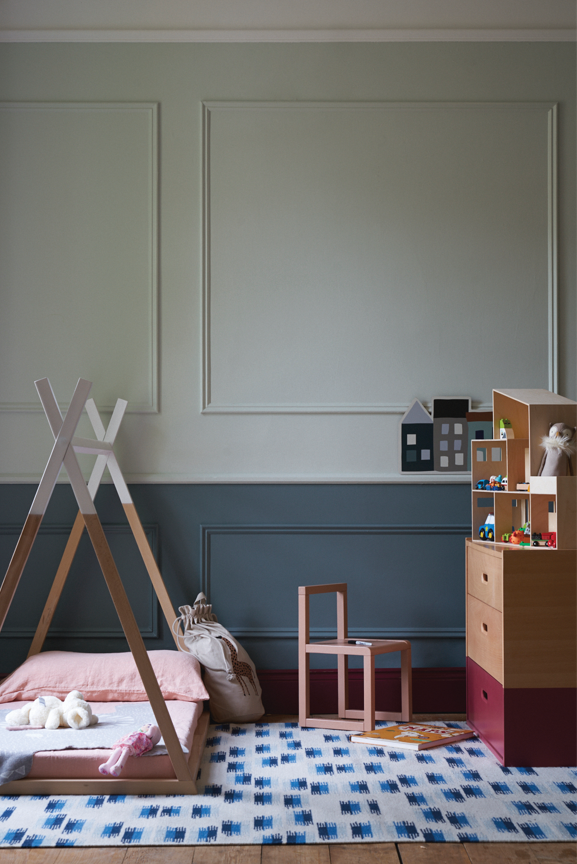
There are a lot of advantages to using paint in a child's bedroom. These give an early introduction to colors and tones, kids learn to understand quickly what hues they prefer and don't, and by painting a room, you are, in a non-verbal way communicating to them, that the walls or that section of the room is special and should be maintained.
Color blocking can help create a dynamic space. The blocks of different colors can refresh the room home, and bring energy and positivism. This is also a good chance for you to explain the color wheel to the child, so the next time you ponder over bedroom color ideas, they can tell you which colors would look best next to each other.
'Other than wall paints, to avoid an aging look in the room with the children growing quickly, ensure you consider a scheme that offers longevity and can be easily updated with new accessories or furniture,' says Helen. 'It doesn’t mean you have to avoid a bright bold color. Consider color blocking to create different zones in the room while also adding a fun pattern to the room.'
12. Stripes will bring movement to the design scheme
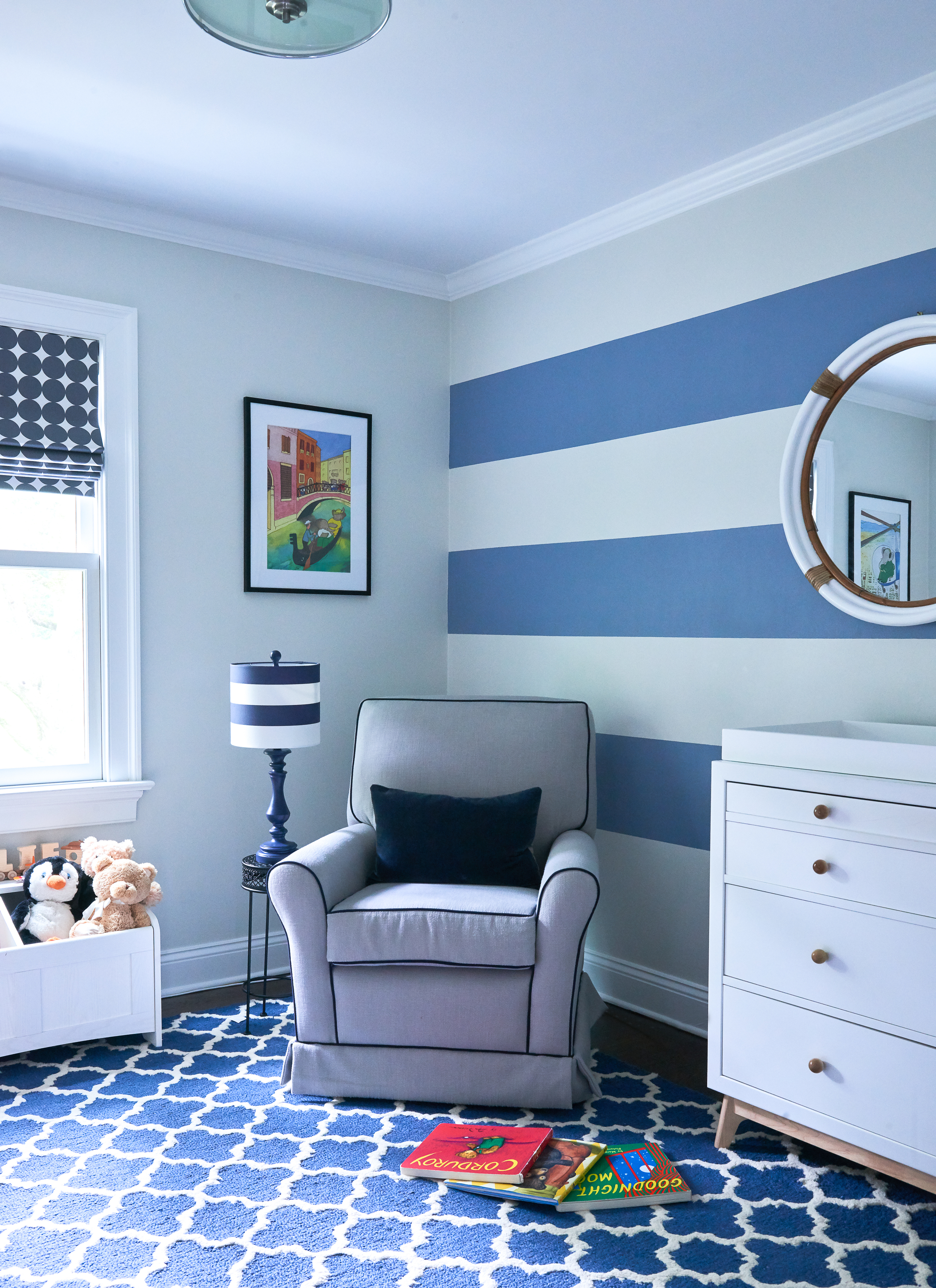
Stripes are a bold choice when it comes to patterns, so they can easily make their place in a kid's bedroom. Usually seen on textiles, stripes can be a great paint effect as well.
If you're on a tight budget, paint can give you the most impact. Stripes are a bonus because they eliminate the need for wall decor and create interest. Plus, stripes can make a room appear wider and more expansive.
In this room, the color blue takes over the space, in terms of furniture, carpet, and wall paint. This is a great soothing hue for the children's bedroom. And, if you get tired of the same shade all over, several other colors that can pair up with blue.
'A painted stripe is an inexpensive alternative to wallpaper and adds interest in a kid's room,' says George. 'Because the base wall color is neutral, the overall effect of the room is calm and soft. But, the bold stripe adds an element of fun.'
What color paint is best for kids room?
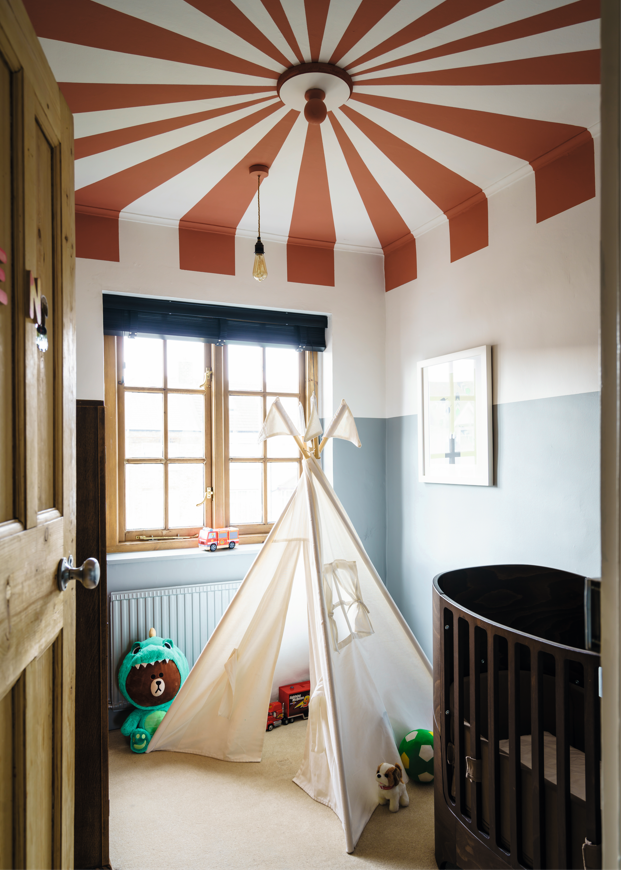
When it comes to children's bedrooms, no color is a no-no. Neutrals and in fact, even black can be used to highlight a section of the room. The advantage of color is that it can be used to section off spaces. Perhaps a painted bookshelf will help the child keep the room organized and know where to keep what.
Color also opens up a child's mind, imagination, and curiosity to learn more. Usually, pastel colors go well in a kid's room as these are softer tones that don't overwhelm and can help them relax and sleep.
While pink and blue are the usual suspects for kids' bedrooms, even red has the potential to be a good contender. You simply need to find the right shade. A terracotta or rust tone can be a rich, warm and welcoming color. Make sure to have lots of toys and fun things in a darker room like this to keep the mood of your child’s room light.
Yellow is a terrific color as it has an inherent bright, happy personality. Consider choosing ones that have a brown or grey undertone as a very bright or surgery yellow can make a child too overactive and stimulated.
Another way with paint colors is to use blocks of different colors throughout the room. By spacing them out, you can make sure none of them overwhelming you. Choose blues, greens, and greys for a more cohesive scheme.
Be The First To Know
The Livingetc newsletters are your inside source for what’s shaping interiors now - and what’s next. Discover trend forecasts, smart style ideas, and curated shopping inspiration that brings design to life. Subscribe today and stay ahead of the curve.

Aditi Sharma Maheshwari started her career at The Address (The Times of India), a tabloid on interiors and art. She wrote profiles of Indian artists, designers, and architects, and covered inspiring houses and commercial properties. After four years, she moved to ELLE DECOR as a senior features writer, where she contributed to the magazine and website, and also worked alongside the events team on India Design ID — the brand’s 10-day, annual design show. She wrote across topics: from designer interviews, and house tours, to new product launches, shopping pages, and reviews. After three years, she was hired as the senior editor at Houzz. The website content focused on practical advice on decorating the home and making design feel more approachable. She created fresh series on budget buys, design hacks, and DIYs, all backed with expert advice. Equipped with sizable knowledge of the industry and with a good network, she moved to Architectural Digest (Conde Nast) as the digital editor. The publication's focus was on high-end design, and her content highlighted A-listers, starchitects, and high-concept products, all customized for an audience that loves and invests in luxury. After a two-year stint, she moved to the UK and was hired at Livingetc as a design editor. She now freelances for a variety of interiors publications.
-
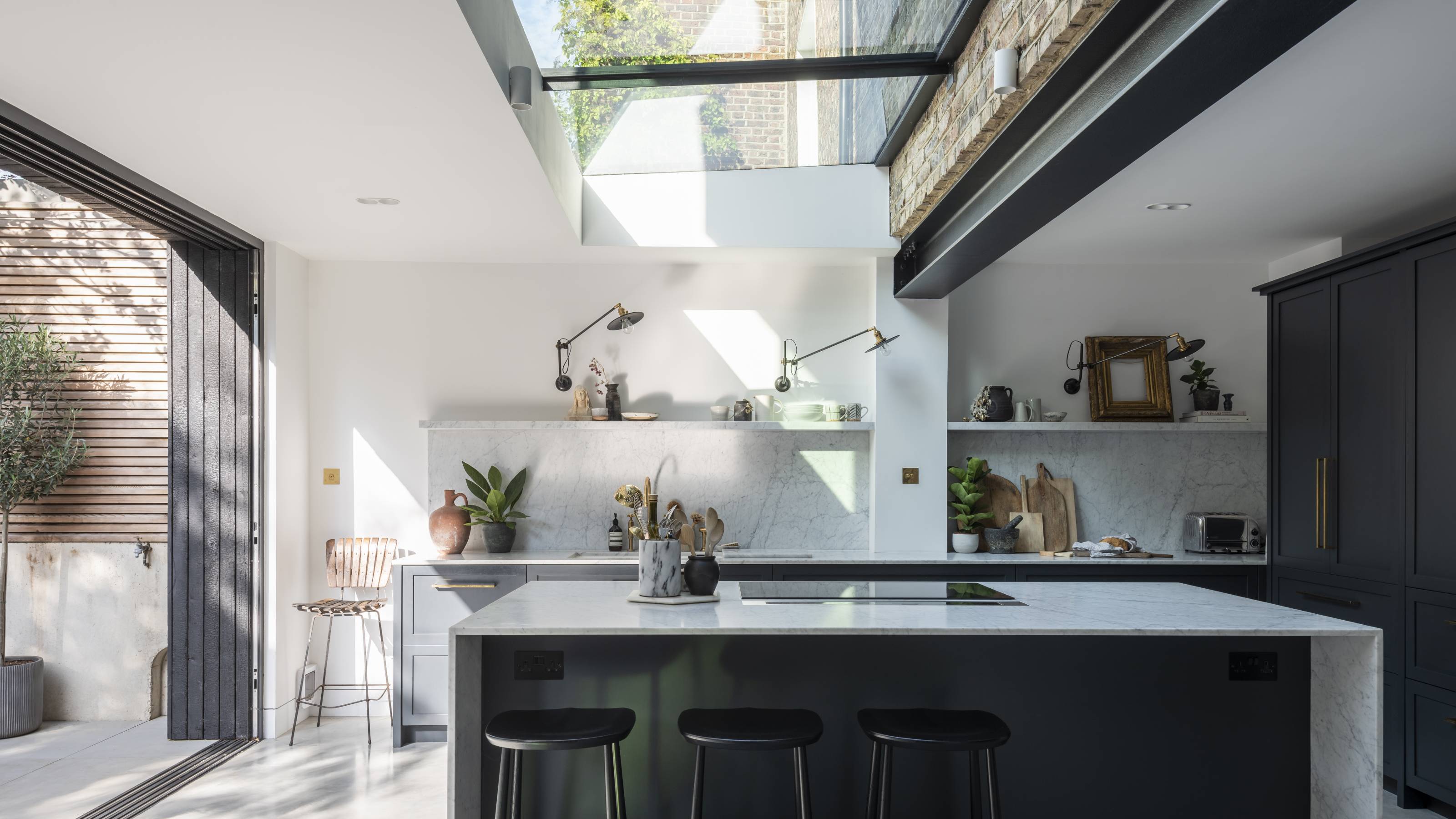 How Much Does an Extension Cost in 2025? Renovation and Design Experts Break Down Your Budget
How Much Does an Extension Cost in 2025? Renovation and Design Experts Break Down Your BudgetExplore how much different types of extensions cost in 2025 to budget for your project accurately
By Amy Reeves Published
-
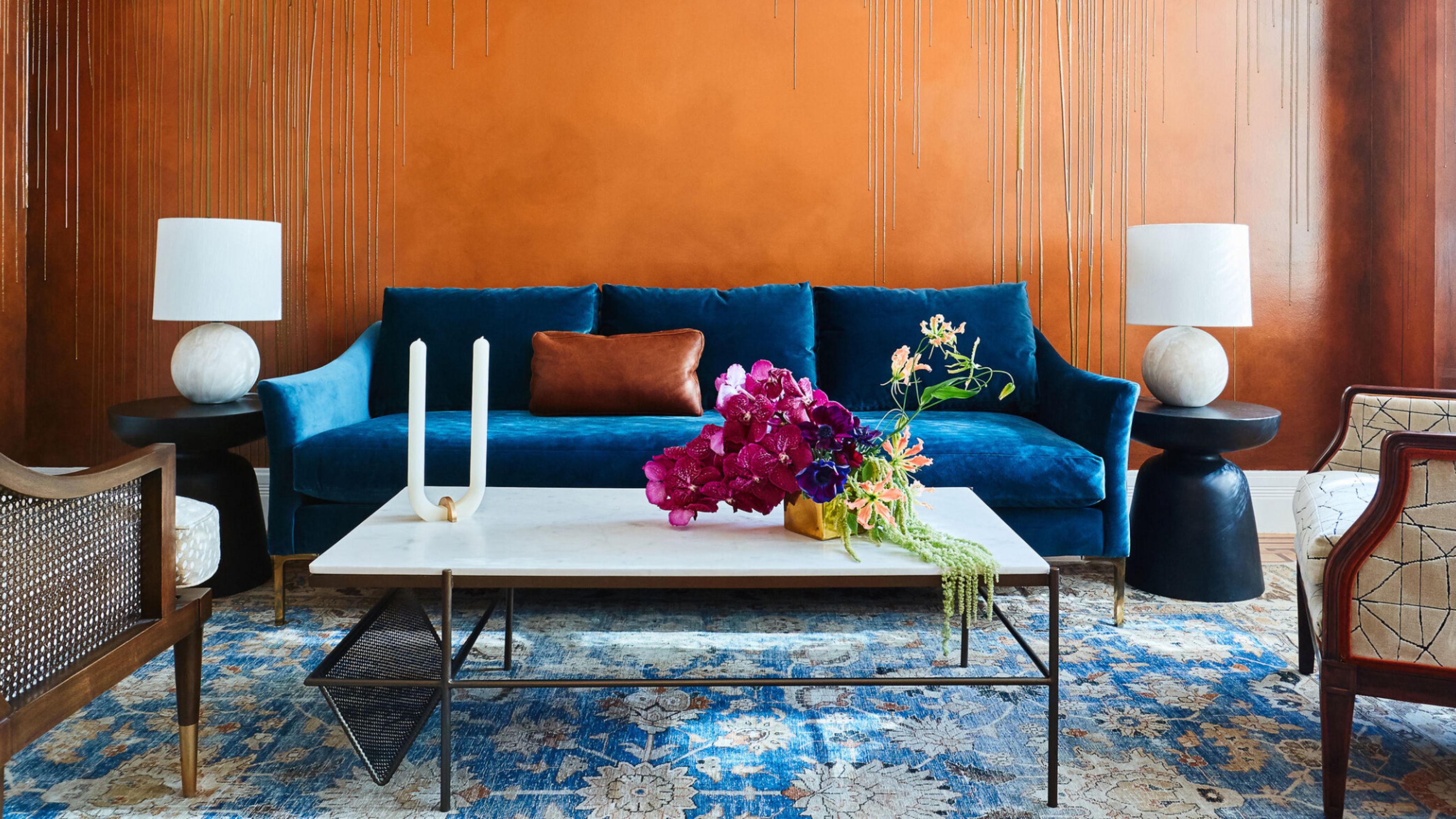 8 Blue And Orange Living Room Ideas Where "Enveloping And Transformative" Is the Mood
8 Blue And Orange Living Room Ideas Where "Enveloping And Transformative" Is the MoodA blue and orange scheme for living rooms may sound jarring, but these spaces prove they're striking, vibrant, and certainly unforgettable
By Camille Dubuis-Welch Published